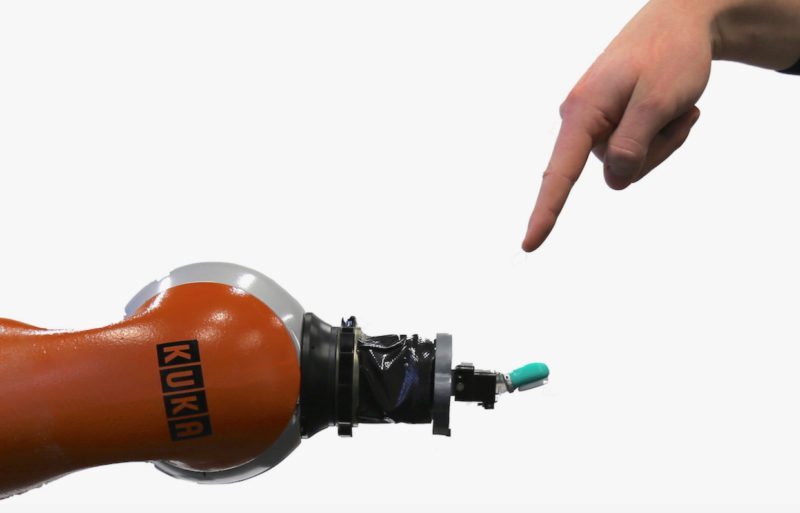Researchers to Make Robots Feel Pain
Ashley Allen / 9 years ago

A group of German scientists, presumably jealous of the innate anaesthesia of artificial beings, want robots to feel pain. Researchers from Leibniz University of Hannover aim to develop an “artificial robot nervous system to teach robots how to feel pain.” Why? Why would they do that? That’s just mean.
“Pain is a system that protects us,” researcher Johannes Kuehn explained to Spectrum IEEE. “When we evade from the source of pain, it helps us not get hurt.”
The team, led by Professor Sami Haddadin – a notable figure in the field of human-robot interaction – pitched the project at the IEEE International Conference on Robotics and Automation (ICRA) in Stockholm, Sweden last week.
As Kuehn and Prof. Haddadin write in their ICRA paper:
“A robot needs to be able to detect and classify unforeseen physical states and disturbances, rate the potential damage they may cause to it, and initiate appropriate countermeasures, i.e., reflexes. In order to tackle this demanding requirement, the human antetype shall serve as our inspiration, meaning that human pain-reflex movements are used for designing according robot pain sensation models and reaction controls. We focus on the formalization of robot pain, based on insights from human pain research, as an interpretation of tactile sensation.”
The researchers have already developed a prototype of the artificial nervous system, hooked up to a Kuka robotic arm with a BioTac tactile fingerprint sensor:
https://www.youtube.com/watch?v=3M75f4D9pwg
Far from being an exercise in sadism, the artificial nervous system is designed to both protect expensive robots and automated machines from damaging themselves and to allow “canary” robots to investigate potentially hazardous environments – even other planets – to ensure that they are safe for human exposure.



















